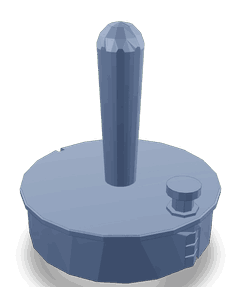This truck part is made by Cummins®. We guarantee that all of our parts are from the OEM (original equipment manufacturer), ensuring a proper fit and quality manufacturing.
We honor the warranty provided by the original equipment manufacturer.
Introduction
The Cummins 3164640 Camshaft Bushing Installer is a specialized tool designed for the maintenance and repair of heavy-duty truck engines. It facilitates the precise installation of camshaft bushings, which are vital components in the engine’s valve train system. This tool ensures that the bushings are correctly positioned, contributing to the overall efficiency and reliability of the engine 1.
Basic Concepts
Camshaft bushings function as bearings within the engine, allowing the camshaft to rotate smoothly while minimizing friction and wear. They are essential for the proper functioning of the valve train, which controls the opening and closing of the engine’s valves. A camshaft bushing installer ensures that these bushings are installed with the correct alignment and pressure, which is important for the camshaft’s operation and the engine’s performance 2.
Purpose and Function
The Cummins 3164640 is designed to aid in the accurate installation of camshaft bushings during engine maintenance or repair. It provides a stable and aligned platform for the bushings, allowing them to be pressed into place with the appropriate force. This ensures that the bushings are seated correctly within the engine block, which is important for the camshaft’s smooth operation and the engine’s overall performance 3.
Key Features
This Cummins part is characterized by several key features that enhance its performance and reliability. It is constructed from durable materials to withstand the rigors of engine repair. The design includes precise alignment guides and a robust pressing mechanism to ensure accurate bushing installation. Additionally, the tool is engineered to be compatible with a range of engine models, making it a versatile addition to any repair toolkit.
Benefits
Using the Cummins 3164640 offers several advantages. It improves the accuracy of bushing installation, which can lead to reduced repair times and enhanced engine performance post-repair. The tool’s design also helps to minimize the risk of damage to the engine components during the installation process, contributing to a more reliable repair outcome.
Installation Process
To use the Cummins 3164640 effectively, begin by ensuring the engine is properly prepared for repair. Align the installer with the engine block according to the manufacturer’s instructions. Place the camshaft bushing into the designated area of the installer and apply the recommended amount of pressure to seat the bushing correctly. After installation, perform a thorough check to confirm that the bushing is properly installed and that the engine components are undamaged.
Troubleshooting and Maintenance
Common issues with the Cummins 3164640 may include misalignment or difficulty in pressing the bushings into place. To address these, verify that the installer is correctly aligned with the engine block and that the pressing mechanism is functioning properly. Regular maintenance of the tool, such as cleaning and inspecting for wear, will help ensure its longevity and optimal performance.
Safety Considerations
When using the Cummins 3164640, it is important to observe several safety guidelines. Ensure that the engine is cool and disconnected from any power sources before beginning the repair. Wear appropriate personal protective equipment, including gloves and safety glasses, to protect against injury. Follow the manufacturer’s instructions carefully to prevent accidents and ensure the safe use of the tool.
Conclusion
The Cummins 3164640 Camshaft Bushing Installer is an essential tool for the precise installation of camshaft bushings in heavy-duty truck engines. Its design and features contribute to improved engine performance, reduced repair times, and enhanced reliability. By following proper installation procedures, maintenance practices, and safety guidelines, technicians can ensure the optimal use of this tool in engine repair and maintenance.
-
Mananathan, R. (2022). Automobile Wheel Alignment and Wheel Balancing. SAE International.
↩ -
Barton, D. C., & Fieldhouse, J. D. (2009). Automotive Chassis Engineering Powertrain Chassis System and Vehicle Body. Elsevier.
↩ -
Denton, T., & Pells, H. (2022). Automotive Technician Training, Second Edition. Routledge.
↩
SPECIFICATIONS
RECOMMENDED PARTS
* Variable geometry turbocharger and electronic actuator repairs are not eligible to be claimed as over-the-counter under New or ReCon parts warranty for parts installed after October 1, 2018.
* Diesel Oxidation Catalyst (DOC), Diesel Particulate Filter (DPF), Selective Catalyst Reduction (SCR) catalyst, and Electronic Control Module (ECM) repairs are not eligible to be claimed as over-the-counter under New or ReCon parts warranty for parts installed after January 1, 2020.
* These restrictions are only applicable to New parts and ReCon parts coverages for the components listed above sold to a customer in the US or Canada. All other coverages are excluded. All other regions are excluded.








